I’ll admit: it isn’t the most eye-catching city in Mexico. It’s not bursting with camera-ready heritage architecture or anything like that. Then again, paradoxically this is also why you may find it worth visiting — at least, if you can appreciate its authenticity.
If you’d like to see what an unvarnished but generally safe Mexican city looks like and also visit several interesting sights, then Villahermosa is worth having a look around (albeit not worth going out of your way for).
I loved its lush jungle parks filled with life, its archeological exhibitions, and its location amid several rivers.
Best of all, Villahermosa is a perfect waypoint between many popular tourist destinations such as Oaxaca and the Yucatan, so you can give it a quick look while you’re transiting through the region.
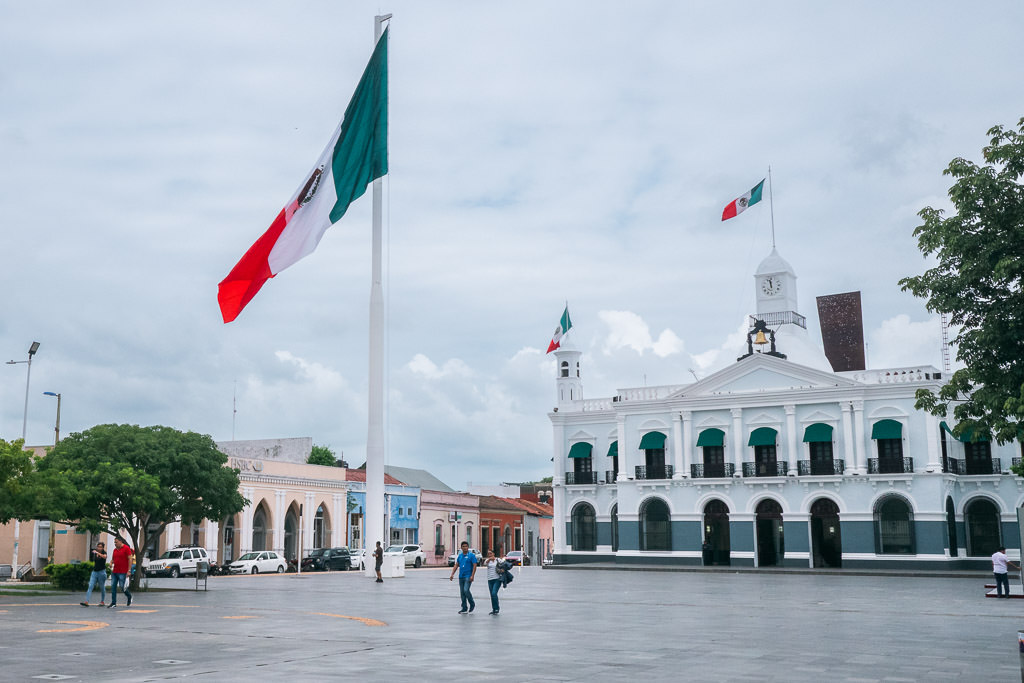
How to travel via Villahermosa
Villahermosa is on the way to a lot of places, making for a logical waypoint on a larger trip in Mexico.
Being the capital of Tabasco state, it’s flanked by several tourist-favorite regions including Oaxaca, Chiapas, and the Yucatan, so you may inevitably pass through it on your travel route.
From Oaxaca to the Yucatan: If you’re traveling overland from Oaxaca to the Yucatan while skipping Chiapas state (e.g. San Cristobal) then Villahermosa is the logical relay point between them. I’ve traveled by night bus from Oaxaca City to Villahermosa, which is a lengthy journey (12+ hours) but gets you most of the way to the Yucatan. From Villahermosa, you can travel onward to Palenque, Campeche, Merida, or Cancun.
From San Cristobal to Palenque: The more direct road between these two towns in Chiapas suffers regularly from Zapatista blockades, which is why the coach buses go the long way around via Villahermosa. If you travel between San Cristobal and Palenque by bus, you are likely to end up in Villahermosa (you should of course break up the bus journey by buying two tickets if you want to stay there).
By air to Palenque: If you’re wishing to see the incredible Mayan ruins of Palenque and travel there directly you’ll have to fly to Villahermosa’s airport. Palenque Airport has not been in operational for some time, so Villahermosa is now the closest landing point, from where it’s a 2-hour transfer to Palenque.
In any of these scenarios, you will have a chance to add an overnight stay or just a day of sightseeing in Villahermosa.
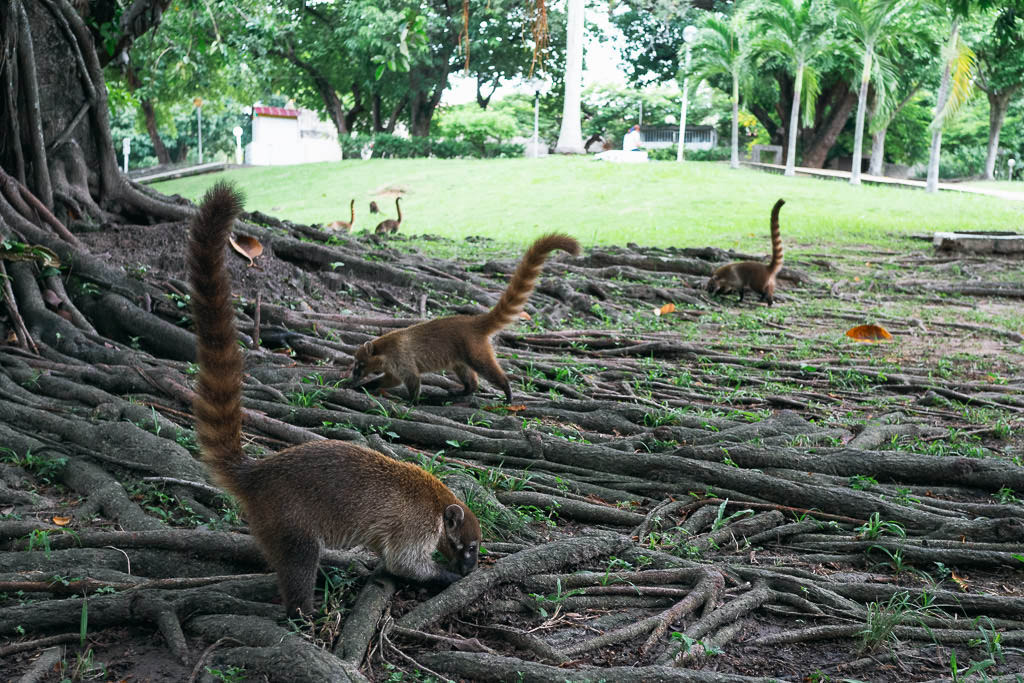
Adding a stopover in Villahermosa
In between arriving by coach bus from Oaxaca in the morning and continuing to Palenque in the evening, I spent one day in Villahermosa.
It’s easy to explore Villahermosa as the sights are not far apart.
Helpfully, the ADO central bus terminal has a luggage storage service. The price depends on the weight of your luggage, but for about 15 to 20 pesos per hour, you can leave your bag here. You can find the storage service among the cafes and convenience stores next to the main departure hall. It stays open until 10pm.
After dropping off my main luggage, I explored Villahermosa in comfort carrying just my daypack.
Staying the night in Villahermosa
To be right near the ADO bus terminal, I suggest the Blanquita hotel.
Or if you’d like to stay in the central Zona Luz, consider Hotel Miraflores.
Things to see and do in Villahermosa
Rather than itemizing every possible sight, I will keep it simpler by highlighting the three specific areas worth checking out. Each has a number of smaller sights within walking distance.
1. Explore the Zona Luz
The Zona Luz is the central area surrounding the main square (Plaza de Armas). It’s an expectedly lively quarter with plenty of shops and restaurants and some pleasant walking streets as well.
It’s about a 15-minute walk southeast from the ADO bus terminal, so you can easily choose to go there on foot.
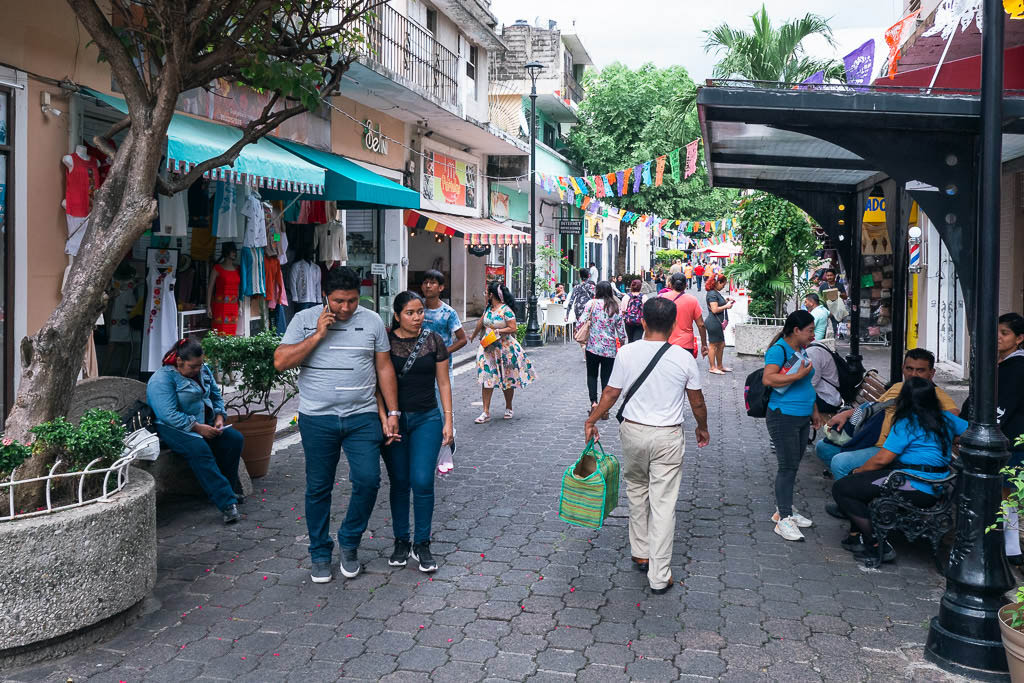
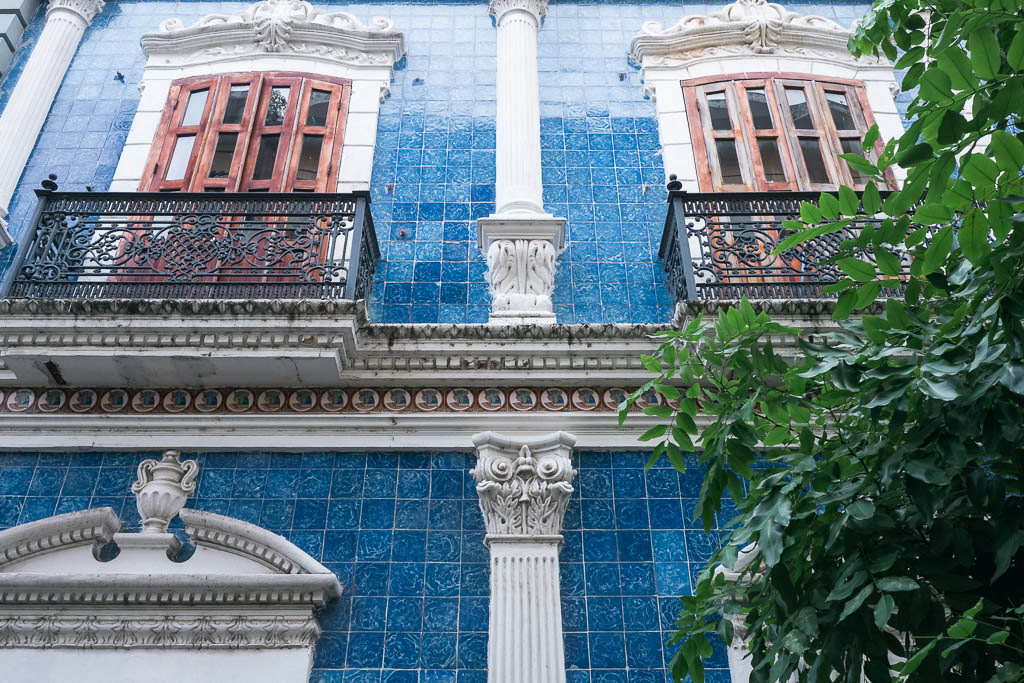
There are several things to check out here:
- Several walking streets sprinkled with some of Villahermosa’s few historical buildings.
- The main square, the Plaza de Armas, which is home to government buildings and an enormous flagpole reminiscent of the main square in Mexico City
- The Grijalva riverside promenade, which was under complete renovation during my visit and will soon have new pavement and riverside bars. There is a bridge that crosses the river that also includes a watchtower for some higher-up views. 15 MXN entry fee.
- Casa de los Azulejos, a gorgeous blue-tiled historical building housing several small exhibits on ancient Mexico and the state of Tabasco. (35 MXN entry fee.)
The center is also a great area to grab a meal on a budget. A big delicious plate of food for about 100 MXN is still the norm here, unlike the tourist towns where the prices are often inflated.
3. Explore Parque Museo La Venta & around
This fantastic park area is not to miss! It’s a bit further out from the center so I suggest taking a taxi. The local price for a taxi from the main square to Museo La Venta should be around 40 to 60 pesos.
A number of sights are clustered around this area, including Museo La Venta, the Malecon de las Aguilas, and Parque Tomas Garrido Canabal. Instead of pretending they’re totally separate places, I would all consider them part of the same park area.
Be sure to bring some mosquito spray as they are quite prevalent here.
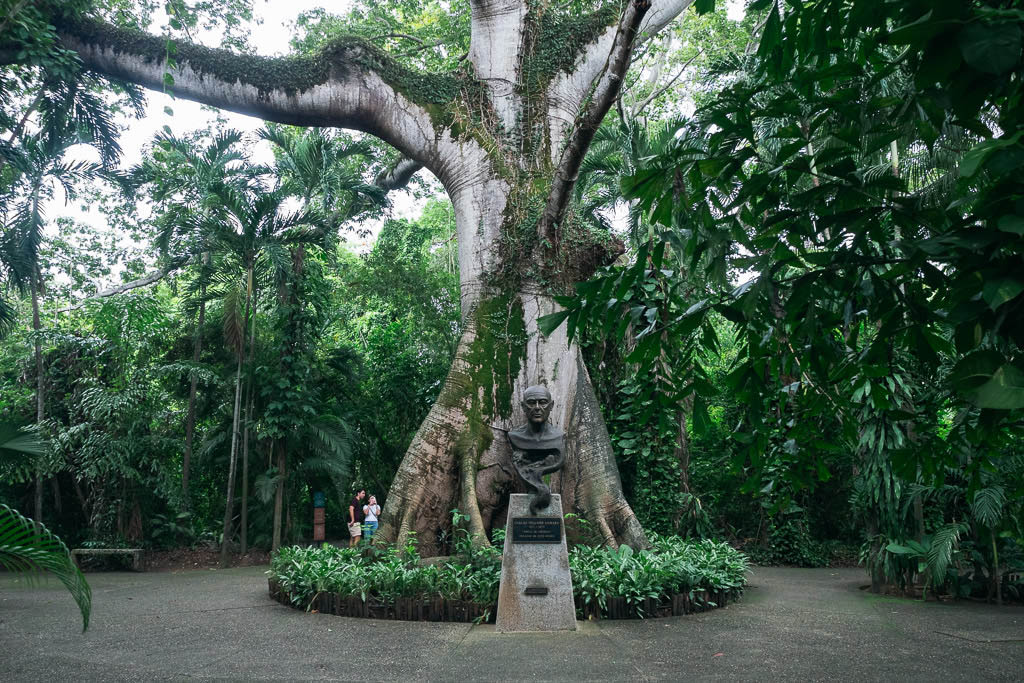
The central attraction is Museo La Venta, an unusual combination of a zoo and an archeological park. The small and very old-school zoo area is not exactly the most inspiring (some of the cages are depressingly small). What’s of far greater interest are the many ancient Olmec statues placed along windy paths through the jungled environments.
The Olmec civilization far predates the Maya and Aztecs and is noted for its colossal head statues sculpted from huge basalt boulders. Impressively, before being carved these boulders were transported for distances over 150 km or 93 miles using unknown methods.
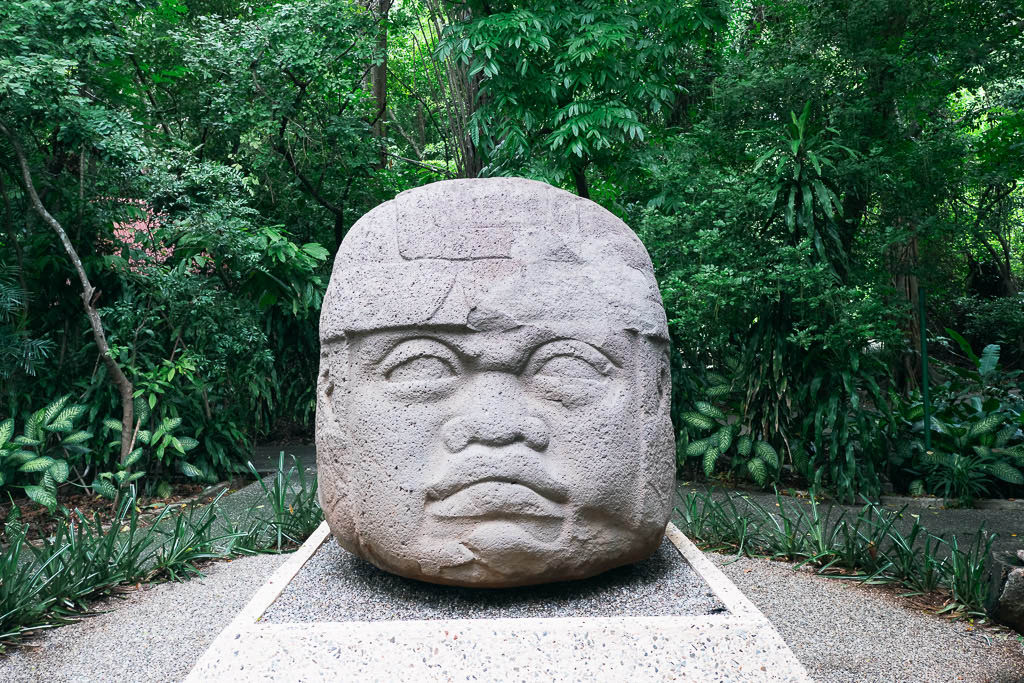
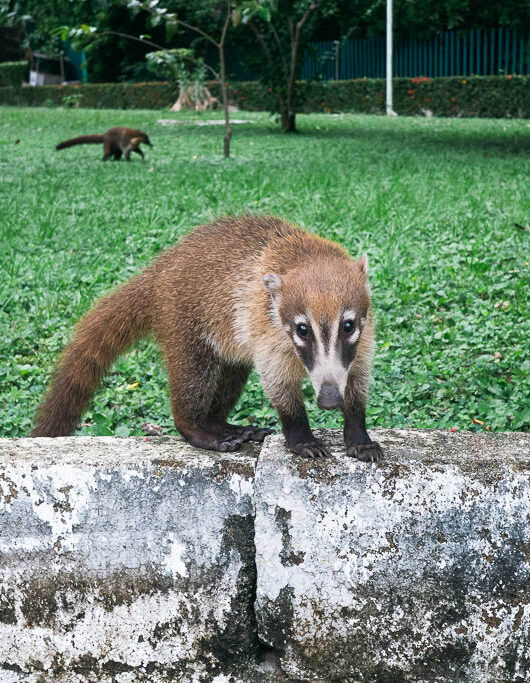
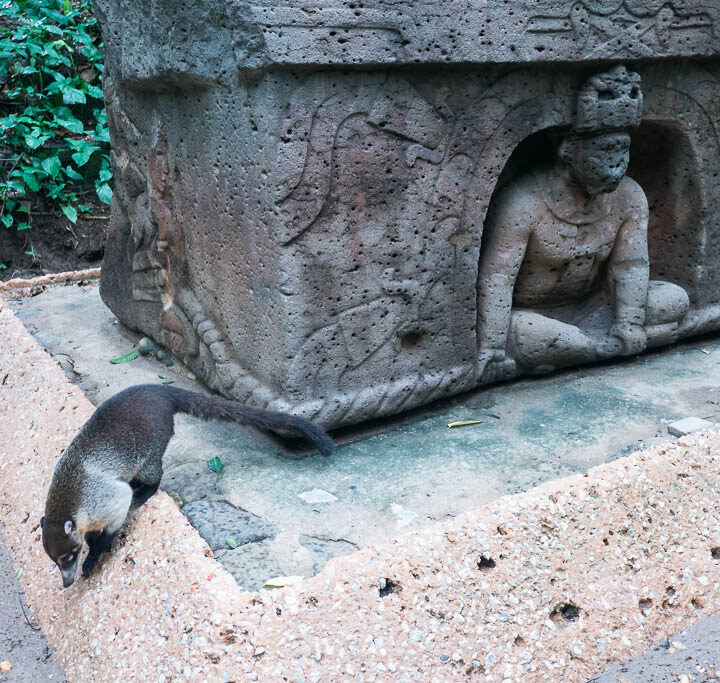
Unless you have been to the anthropological museum in Xalapa in Veracruz state, this is your best chance to see these phenomenal creations, which date back as far as 1200 B.C. Only 17 intact examples of these heads are known to exist.
The statues here were originally uncovered from La Venta, an archeological site located 1,5 hours drive west of the city.
Signs in the park are written in both Spanish and English. Tickets cost 60 MXN with free entry on Mondays.
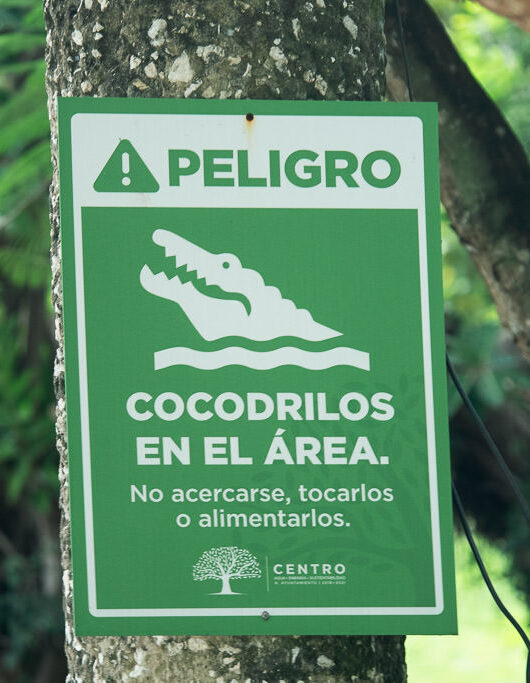
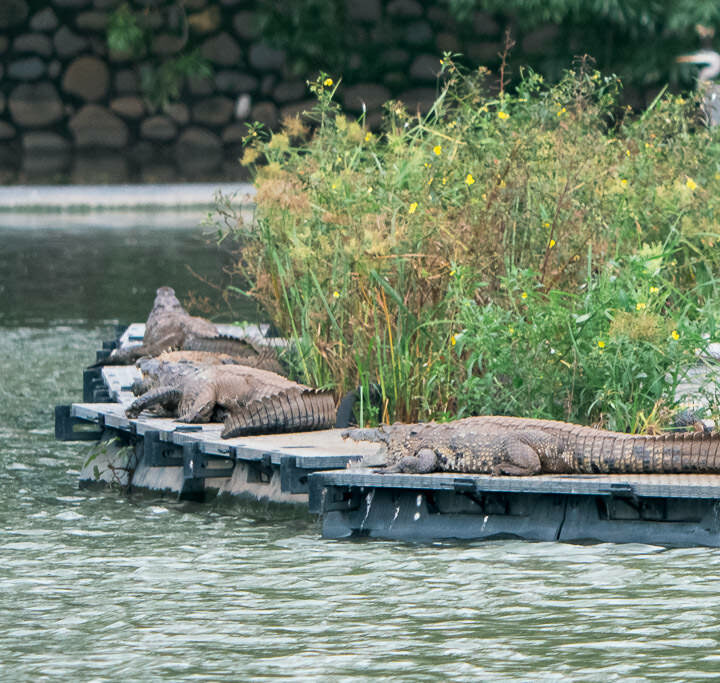
While you’re here, it’s highly worth strolling through the surrounding park areas. They’re teeming with life, including large birds like cormorants and hundreds of roaming coati bears. The coatis are quite tame so if you’ve ever wanted to see these friendly furry raccoon-like creatures up close, here is your chance!
Keep an eye on the lagoon as you may well be able to spot a crocodile or two. The species is known as Morelet’s crocodile, which can be found in Mexico, Guatemala, and Belize, and can grow up to 3 meters long.
3. Visit the Regional Museum of Anthropology
Unfortunately, I had to miss this as it was closed during my stay, but I do want to mention this museum in the interest of completeness.
The Regional Museum of Anthropology is about a 15-minute walk south of the Zona da Luz (the center), so you could decide to walk there along the riverfront, or you can take a taxi if you’re coming from the La Venta park area.
The museum houses many pre-Hispanic artifacts, including the Mayan calendar that predicted 2012 to be the end of the world. (This was quite a hype at the time and formed the basis for the disaster movie 2012). There is a lot to see from the Olmec and Mayan cultures, as well as a small contemporary art exhibit.
The entry fee is 24 pesos and is open from 9am – 5pm Tue-Fri (and until 7 pm on Saturdays). Closed on Sundays and Mondays. Travelers I met said they’d spent about an hour here. The signs are in Spanish.
These three locations should give you about 6 hours’ worth of sightseeing in Villahermosa — perfect for a stopover!
Things to do outside Villahermosa
While I stayed only briefly, there are other points of interest near Villahermosa that may inspire a longer stay.
In particular, about 2 hours south of the city is the pueblo magico of Tapijulapa. I’ve known about this place for a while but just haven’t had time to visit it yet. With cobblestone streets, white houses, and several nearby waterfalls, it seems to be a charming location. This video on YouTube originally alerted me to its existence and it’s still on my “want to see” list in Google Maps.
Villahermosa is also surrounded by numerous wetlands, a type of ecology you won’t generally find in Oaxaca or Chiapas, so you might want to grab your chance to see it here. Guided tours can take you into the swamps and wetlands for bird-watching trips.
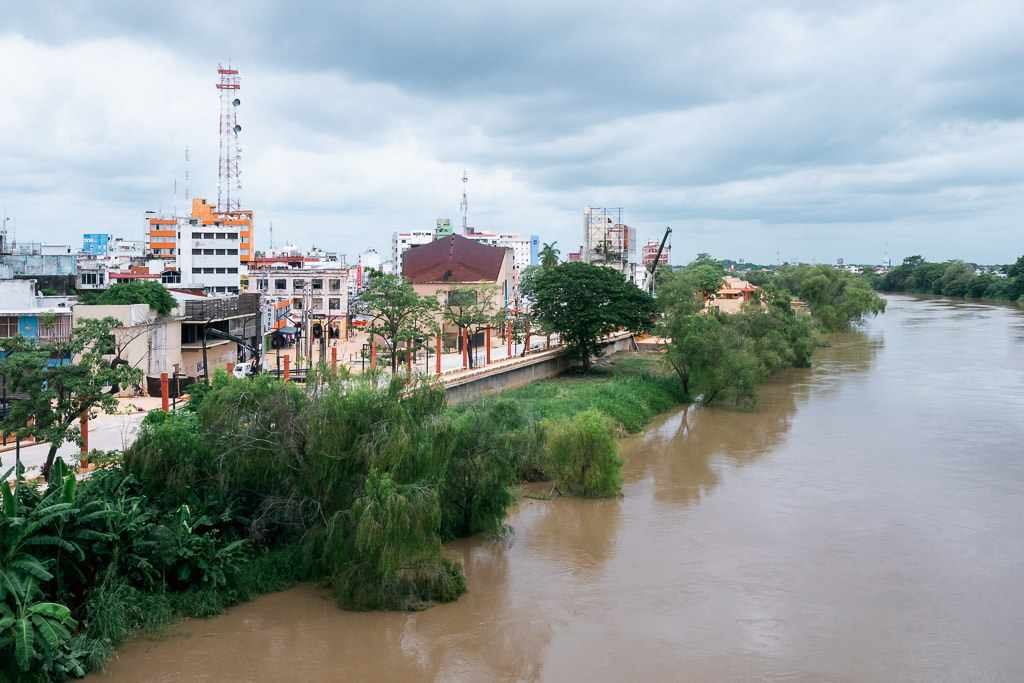
Is Villahermosa worth visiting?
Although the city doesn’t have that much of a historical core, you can experience an authentic Mexican city and there are several worthwhile sights, making it potentially worth a stopover.
Despite going unmentioned by many travel guides, I enjoyed my day spent in Villahermosa, which served as a wonderful break between two legs in my overland journey.
Although you can take some photos at just the right angles to make it seem otherwise, it lacks almost any of the colonial architecture or colorful houses you may find in Oaxaca or San Cristobal, among others. You can expect to find mostly a modern city.
But that’s not necessarily a reason to skip it! I sometimes think most tourists in Mexico only get to see a fantasy version where everything is brightly colored, beautiful, and from the colonial era. That is not exactly representative, so it can be interesting to contrast the usual tourism honeypots with a ‘normal’ city like Villahermosa.
It’s often warned that the state of Tabasco is swelteringly hot, swampy, and too overly preoccupied with its petroleum industry to be much of a tourist attraction. That may be true, but the curious traveler may still find Villahermosa a rather interesting place to visit. I was definitely happy to have paid it some attention!
Some links may be affiliate links, meaning I may earn commission from products or services I recommend. For more, see site policies.






0 comments
Leave a comment
Your email address will not be published. Comments are manually moderated.